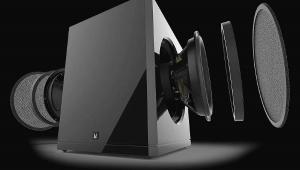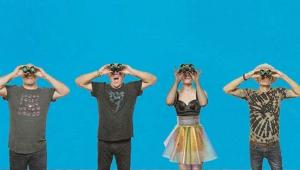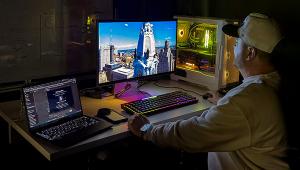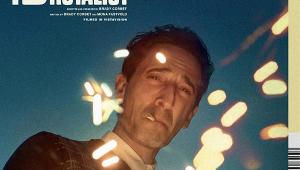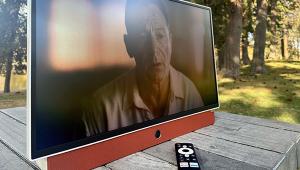The bass guitar is obviously lacking on the atmos mixes. Roger is too low and has no weight. The kick drum is also lacking on Highway star and the extra effects on the vocals are annoying. The toms at the beginning of lazy are way overcooked in the lows, sounds horrible and artificial. Could have been so much better.
Dweezil Zappa on His Atmos Mixing Philosophy, Part 2
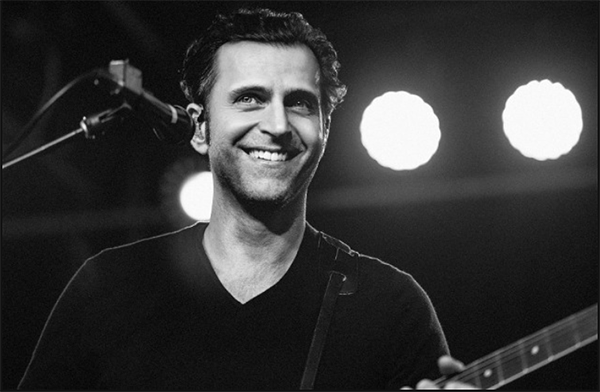
When last we met in this column space, Dweezil Zappa was describing the truly immersive 24-bit/96kHz Dolby Atmos remix—key word, remix—that he did for the 50th anniversary 3CD/1LP/1BD super deluxe edition box set celebrating Deep Purple’s seminal March 1972 album Machine Head (Warner Records). “It’s all about trying to make something work on a musical level for making more of an immersive connection with the listener—without destroying the nostalgia memory that somebody might have of the song,” Zappa said of how he approached the Atmos mix of the perennially classic Machine Head track, “Smoke on the Water.”
You can read more about the ins and outs of Dweezil’s “bookend” approach to “Highway Star,” how he put an additional spotlight on keyboardist Jon Lord on “Lazy,” and what his specific directive from the band was for the Atmos version of “Smoke on the Water”—and how he honored the song’s references to his late father, Frank Zappa—in Part 1, right here.
And now, in Part 2, Dweezil, 54, and I discuss how “Space Truckin’” really takes off in Atmos, what sold him on the Atmos format in the first place, and how he honed his mixing skills by zeroing in on how he feels drums should sound in Atmos. The fireball we rode was moving / But now we’ve got a new machine. . .
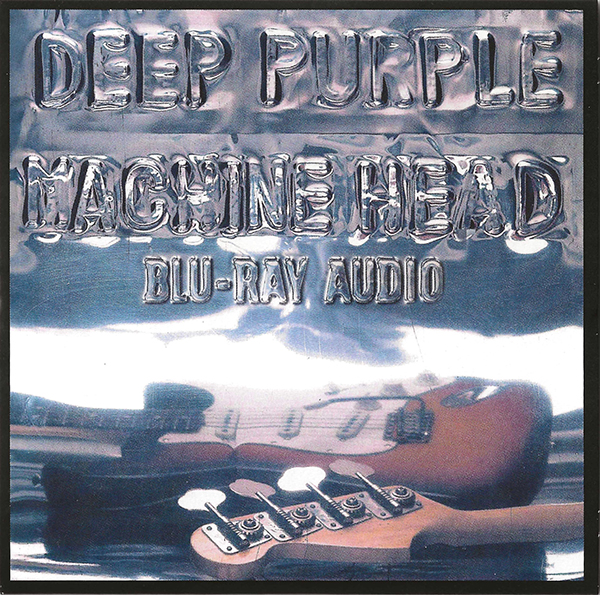
Mike Mettler: Did you reference, or at least get to listen to, the previous quad and 5.1 mixes of Machine Head as reference points for your Atmos remix?
Dweezil Zappa: I didn’t have access to those mixes at the time I was working on the remix—it was really just the stereo mix from the original album. And it was funny, because there was a bit of back and forth when the band was getting the stereo version back from me. On a few songs, they kept referencing some other version and I was like, “I don’t know what you’re talking about!” I guess there had been a version released that [Deep Purple bassist] Roger Glover remixed.
Mettler: Yeah, there was a 25th anniversary 2CD set of Machine Head [released on Warner Archives/Rhino in 1998] that had his stereo remix on it.
Zappa: Yeah. So, sometimes, they were saying, “Oh, you know, it doesn’t have as much bass as the other mix.” They were referencing certain things I wasn’t hearing, and then finally they were like, “Oh, no, we meant Roger’s mix.” I was like, “Oh, I don’t even know what that is.” A lot of times, they were referencing the differences of the new stuff compared to Roger’s mix, and not even necessarily the old, classic [original] mix.
Mettler: Even in the new stereo remix you did for Machine Head, I can hear differences between your remix, Roger’s remix, and the original mix on “Space Truckin’,” for example.
Zappa: There are a few things I did with some actual binaural tricks. In the headphones, it’s actually pretty interesting for stereo. Like, there’s some stuff happening with the drum panning for the drum solo. That’s very different. And in Atmos, that’s probably the coolest part of “Space Truckin’.”
On the guitar solo, there’s a slightly different sound than what was on the original, because to spatialize it and move it in a way where he [Deep Purple guitarist Ritchie Blackmore] keeps his original position in the left, but then he fills the room on the other side in a way that is not just reverb.
I have a little trick I do sometimes where I will take a sound I want to stereo-ize or spatialize, and I move it into a different location. I’ll use the actual sound itself through some kind of modulation, but the envelope detection is the thing that makes it modulate. So, it’s slightly delayed but slightly out of tune, and it’s acting like it’s moving in a way that feels like it’s breathing. That’s what you’re hearing on that particular guitar track. (You can listen to the Atmos mix of “Space Truckin’” on Apple Music here.)

Mettler: I really love hearing how that Blackmore “Space Truckin’” solo moves in Atmos, let me tell you. Can we go back to the beginning for a moment? How did you get involved in the Machine Head project in the first place? How did “the marriage” begin?
Zappa: I’m not exactly sure how it went from the idea to completely turning it into a full project, but I had played with Deep Purple at Montreaux [at the Montreaux Jazz Festival in Switzerland on July 16, 2016], and it was a great experience to do that with them. We played “Peaches en Regalia,” my dad’s song [originally on Frank Zappa’s groundbreaking October 1969 instrumental fusion LP, Hot Rats], and then we segued into “Smoke on the Water.” At that time, it was like, “Oh, this is so cool! I got to do this thing with Deep Purple.”
And then, years later, I have this new studio that’s just been put together. I’m starting to work on Atmos things, and some people I had been in touch with from Rhino/Warners in the U.S. said, “Hey, would you want to try mixing ‘Smoke on the Water’?” I said, “Of course— that’d be fun. Can I get the multitracks?” And they said, “Yeah, okay.” So I did a version that I sent over to them, and they said, “Well, what about maybe doing the whole record in stereo and Atmos?” And I said, “Yeah, that’d be great. When do you guys want to do it?” And they were like, “Oh, we’ll get back to you.”
A couple of weeks went by—maybe even three weeks—and then they said, “Hey, have you done the mixes?” I’m like, “I didn’t even know I was supposed to!” And suddenly I’m way behind since I didn’t get a call back, and I had to rush and try to do it all. The thing about doing a classic album like this one is you want to be able to explore all the possibilities, and you don’t want to be rushed. I did actually have a few full 24-hour days where I just had to get stuff done.
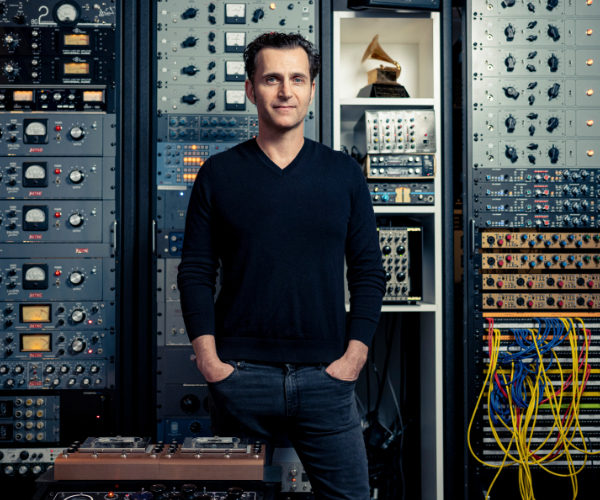
Mettler: Well, it all worked out for the best in Atmos—at least to my ears. To go back even further, you and I have talked about surround sound for a number of years now, so give me the process of how you went from 5.1. to 7.1.4, or however many channels your Atmos studio setup has.
Zappa: The thing about it is, I always appreciated what was possible in the format of multichannel. And when I was building a studio, before I closed up the walls, I was thinking, “Well, this wasn’t really the initial plan,” but when Apple made the announcement they were going to have a real focus on Atmos, and have all of this new material in Atmos—considering the Dolby connection with Apple, I was already down the rabbithole, thinking, “I should do this.”
When this became a thing where artists would have opportunities to have both new albums as well as albums that have existed in the past in Atmos, I said, “All right, well, I will make the leap in and build the studio out, and make it my own personal sound laboratory.”
It’s a fully certified Dolby room. It’s 7.1.4, but it’s an ATC room, and it actually has five subwoofers. It’s a very cool setup in here—but the whole thing was put together at the time where it still is kind of the wild west. There are a lot of people who have certain things they like to do, and do them certain ways. I’m still exploring all the possibilities of what can work—and what absolutely doesn’t work.
I think there’s a lot that can be done in different ways, but it is very genre-specific when it comes to rock. It’s actually one of the harder formats to do something good with, because everybody’s so used to the idea of seeing a live rock band in front of them. And if you start making it [the Atmos mix] do weird stuff and have weird placements, some people find that off-putting, so you end up being a little bit more limited when it comes to some rock stuff, if you’re talking about classic material.
My argument would be that if you’re making a record from the ground up and you’re making a rock album, none of that’s going to matter because you can now decide, “Oh, this is where I want the chorus to fly over my head. I want that kind of thing to happen.” It’s already integrated into the arrangement versus having to change somebody’s opinion about something that’s very deep in their psyche from their childhood, or whatever.
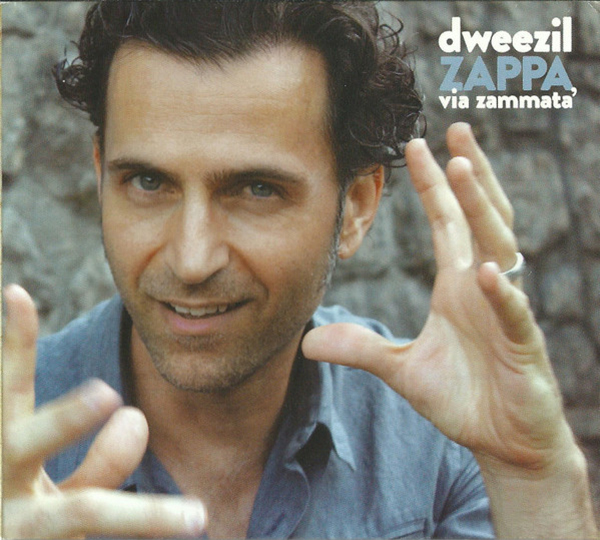
Mettler: My philosophy is, use all 360 degrees as you see fit—as long as it sounds natural and not too gimmicky. What was the very first thing you personally mixed in Atmos? Was there one moment where you went, “Okay, this is what I want to do with it”?
Zappa: I did a lot of experiments where I was trying to see how close I could get with just a drum kit to make it feel like you were sitting in the drummer’s position. And the thing about the way your ears interpret sound is, if you have stereo speakers in front of you, your brain will detect a phantom center. But if you have stereo speakers on the side of you, you only hear it as left and right. You don’t hear that center image. So, you can’t float something in that space in the way you would want to, to make it feel like, “Oh, wow, directional things are close. This one’s closer. This one’s over here behind me.”
The room gives you the ability to move the sound around you, but it’s not completely the same depth perception. Basically, what I’m saying with the drum kit is, the guy—the drummer—doesn’t have arms that are 15 feet long to put their arms over here. Trying to have a semicircle of toms like you would if you were sitting in the drum position—I’ve been looking for different ways to suspend that sound so that you do get some of a directionality that’s closer to that experience.
Part of what I’ve done is, I’ve put things in the overheads, and then I put stuff in the sides. But I do some other stuff sometimes to take, let’s say, a tom that’s kind of floating slightly in the overhead, slightly in the side, and mostly in the front left and right. But then, from behind me, I might take a copy of that tom and then I would use delay and modulation to make that move differently. So, the tom gets hit—but then you also hear it behind you. You almost hear it in double. You hear this front and back image of the tom, but it has to be subtle enough that you’ve just established it’s behind you, and it’s doing this thing—it can’t just be like a big, crashing sound.
When you’re in the right position, and the mix has enough space in it, you actually can feel this floating-bubble tom kind of thing. But if you have a lot going on, it’s diminished, because other things eat up that space.
I feel like if I was to record some stuff with that very specific technique in mind, and keep an arrangement that allows you to hear it for the most part, then it will be much more effective—as opposed to trying to make that work within the context of something that’s already competing for the same space.
Mettler: That’s so fascinating. Will you, at some point, put together a full album of new songs you’ll also mix in Atmos? And can we get them on Blu-ray too? (laughs)
Zappa: (chuckles) We’ll have to see, but what would be interesting to me is to actually make an album that’s specifically written for that format, and then record it that way.
The other thing that’s of interest to me in the recording process is to be able to have musicians in a room together and have miking techniques that allow for the space to be fully created so you really do feel like you’re in the actual space. Let’s say you have musicians in the front part of the room and in the back part of the room, and you orchestrate a melody to go between the instruments—and it bounces back and forth in the way that you’re playing it. That way, without any panning at all, in the room, the music’s already moving.
Mettler: So it’s literal real-time movement, as opposed to manipulated delays, or whatever?
Zappa: Right. The elements of that can really put you in the space—and then you can highlight other stuff with actual panning, and other things. I definitely want to experiment with that.

- Log in or register to post comments


Must be system dependent. I don't have those issues and I would bet Dweezil didn't have issues in his room with 5 subs and ATC around.

if you want make money play game you can visit on my site
https://www.3pattitrick.com/2024/07/ludobounty.html

if you want make money play game you can visit on my site
https://www.3pattitrick.com/2024/07/3pattimela.html

if you want make money play game you can visit on my site
https://www.3pattitrick.com/2024/07/3patti-showy-game-apk.html

Think you can get away without paying? The "Eat and Run Police" are on patrol to make sure you don’t. 먹튀폴리스

Don't underestimate the importance of SEO for your business! Hiring someone ensures you don't miss out on valuable traffic. รับจ้างทำ seo










